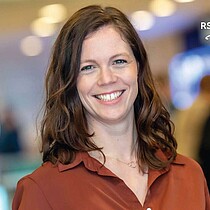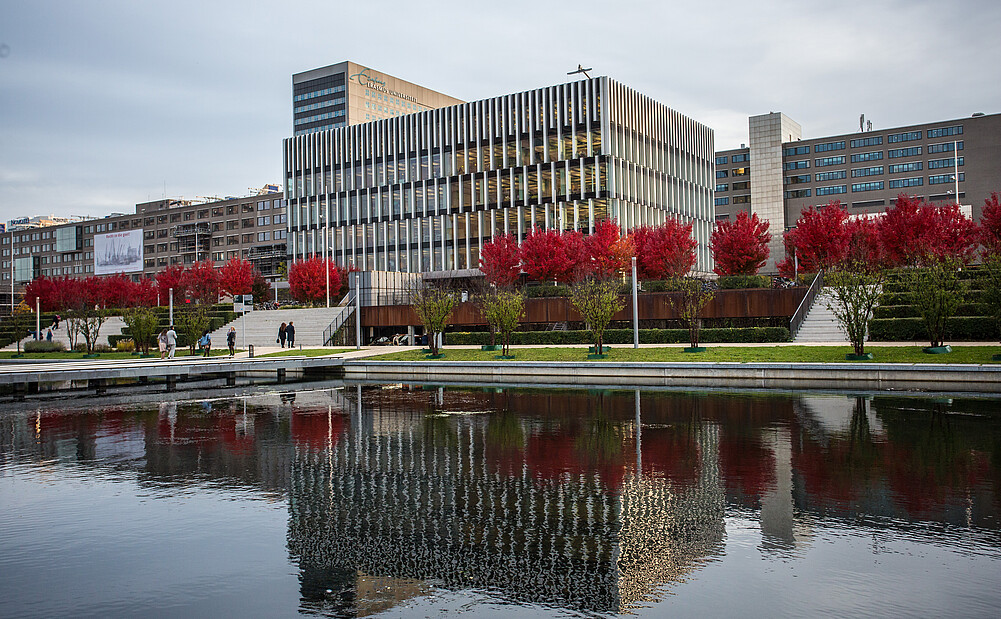

Article: Friday, 21 February 2025
Many cities are becoming smart cities, operating their services with digital technology and data. But there are other urban challenges that can benefit from the technology. As a pedestrian contending with the fatbikes, moped cars and shared scooters in the centre of Amsterdam, recent master’s graduate Vincent Pels was inspired to research technology’s role in developing safe routes for pedestrians. His research, The Influence of Digital Twin Technology on Pedestrian Traffic Management and the Role of Technological Integration investigates how ‘digital twin’ technology can be used for developing and integrating pedestrian traffic management. His co-researchers for his MSc Business Information Management thesis at Rotterdam School of Management, Erasmus University (RSM) were Prof. Ting Li and Dr Beatriz Waltrick.
KYC Analyst (ITTS) at EY
Master of Business Information Management graduate

The findings of his study offer a valuable guide to cities facing similar challenges – how to use tailored digital twin applications for pedestrian traffic management. He also highlighted the need for intense collaborations with stakeholders and strong partnerships to work towards common goals. Vincent’s findings emphasise the importance of including citizens in development and for feedback to increase public trust.
He used a digital twin – a data-driven virtual representation of a real physical asset in operation – to model pedestrians in a smart city, and to consider the role of technological integration, effective data collection, and management systems. Using a digital twin meant he could analyse pedestrian flow patterns, identify congestion points, and assess the impacts of planned urban changes. He could try out data-driven decisions for pedestrian safety and city accessibility on infrastructures like pedestrian crossings and paths to discover how they can help to create a cohesive and efficient strategy.
Vincent also used case studies of Dublin, Helsinki and Singapore because they had already adopted smart city initiatives – each city had used a different approach to integrating digital twins in their urban environment and was at a different stage of implementation, so Vincent could explore a variety of urban challenges and potential applications. He also interviewed experts in regulations, IT, and academia.
All three smart cities in the case studies faced similar challenges to implement the technology, to integrate the data, with scalability, and with technical limitations. He found that the Dublin system can create data layers and interactive environments that aid understanding of complex urban processes, while the Helsinki system focuses on the role of a digital twin in optimising urban planning and traffic management. The Singapore case study highlighted the value of real-time data mirroring for more accurate and timely responses to urban changes, he found.
The ability of digital twins to simulate scenarios and predict pedestrian behaviours means cities can manage foot traffic more effectively and optimise the use of infrastructure while implementing safety measures. “It all creates a more efficient and safer urban experience,” he commented, but also pointed out that using this method requires collaboration between government entities, private companies, research institutions, and the public because each stakeholder’s input is crucial to effectively manage and improve pedestrian traffic.
Each city has created its own framework, established data standards, and developed scalable strategies to facilitate merging their digital twins with existing systems. Vincent identified from the case studies that all smart cities face issues about who owns the data, how it is secured, and how privacy is maintained – all factors are essential for building public trust and fostering cooperation among stakeholders to facilitate the broader adoption of digital twins in urban environments.
Scalability is critical for adapting digital twins to evolving urban environments, he noted. “As smart cities continue to grow and change, the technology must remain flexible to deal with current and future needs. Scalable digital twin systems ensure there can be long-term and sustainable improvements in pedestrian flow and safety.” Pilot projects and controlled experiments to test and scale the application of digital twins and adapt to the city’s specific needs can ensure long-term relevance and effectiveness. And then the process of continuous improvement against rapid innovations means managers must stay informed about advancements in sensor technology, data analytics, AI, edge computing, and the Internet of Things. Continuous feedback mechanisms will help keep DTT applications effective and up to date.
The issue of technological integration ensures that data collection is reliable and that data is managed accurately, enabling more precise simulations and analytics. Managers must address challenges in data collection, management, and system integration, including data ownership, standardization, and privacy concerns. Developing clear policies and enhancing connectivity between systems are crucial.
Vincent Pels’ master thesis was completed as part of his MSc Business Information Management at RSM. Pels, V. T., Li, T., & Waltrick, B. (2024, July 9). The Influence of Digital Twin Technology on Pedestrian Traffic Management and the Role of Technological Integration.


Science Communication and Media Officer
Rotterdam School of Management, Erasmus University (RSM) is one of Europe’s top-ranked business schools. RSM provides ground-breaking research and education furthering excellence in all aspects of management and is based in the international port city of Rotterdam – a vital nexus of business, logistics and trade. RSM’s primary focus is on developing business leaders with international careers who can become a force for positive change by carrying their innovative mindset into a sustainable future. Our first-class range of bachelor, master, MBA, PhD and executive programmes encourage them to become to become critical, creative, caring and collaborative thinkers and doers.
